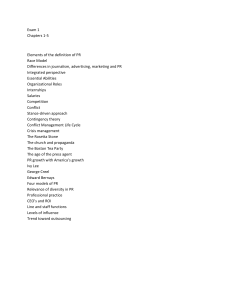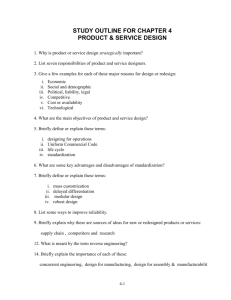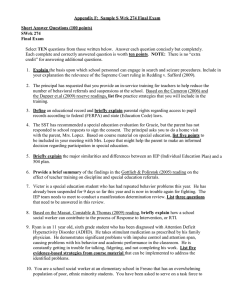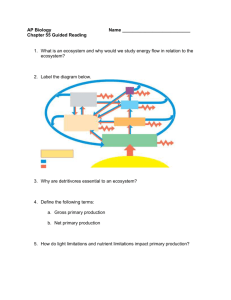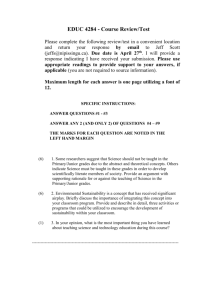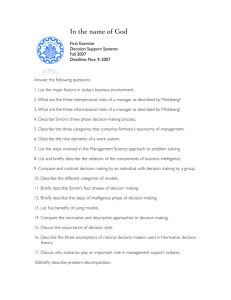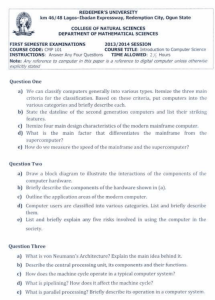Define “public relations” and “marketing,” then explain why these
advertisement
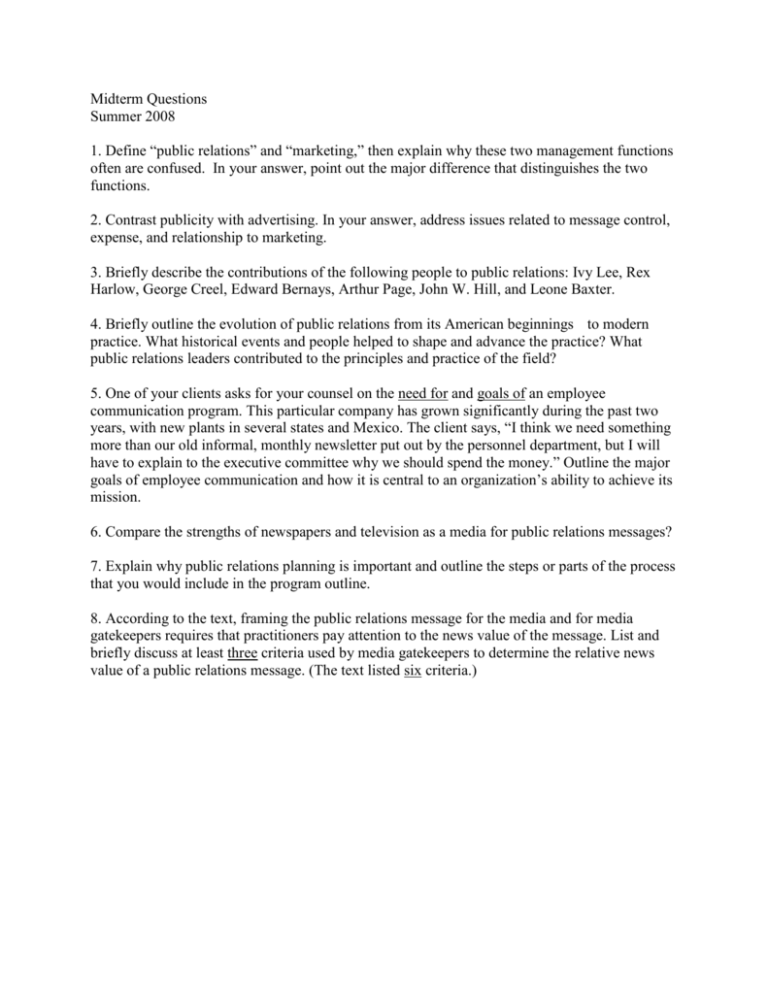
Midterm Questions Summer 2008 1. Define “public relations” and “marketing,” then explain why these two management functions often are confused. In your answer, point out the major difference that distinguishes the two functions. 2. Contrast publicity with advertising. In your answer, address issues related to message control, expense, and relationship to marketing. 3. Briefly describe the contributions of the following people to public relations: Ivy Lee, Rex Harlow, George Creel, Edward Bernays, Arthur Page, John W. Hill, and Leone Baxter. 4. Briefly outline the evolution of public relations from its American beginnings to modern practice. What historical events and people helped to shape and advance the practice? What public relations leaders contributed to the principles and practice of the field? 5. One of your clients asks for your counsel on the need for and goals of an employee communication program. This particular company has grown significantly during the past two years, with new plants in several states and Mexico. The client says, “I think we need something more than our old informal, monthly newsletter put out by the personnel department, but I will have to explain to the executive committee why we should spend the money.” Outline the major goals of employee communication and how it is central to an organization’s ability to achieve its mission. 6. Compare the strengths of newspapers and television as a media for public relations messages? 7. Explain why public relations planning is important and outline the steps or parts of the process that you would include in the program outline. 8. According to the text, framing the public relations message for the media and for media gatekeepers requires that practitioners pay attention to the news value of the message. List and briefly discuss at least three criteria used by media gatekeepers to determine the relative news value of a public relations message. (The text listed six criteria.)
